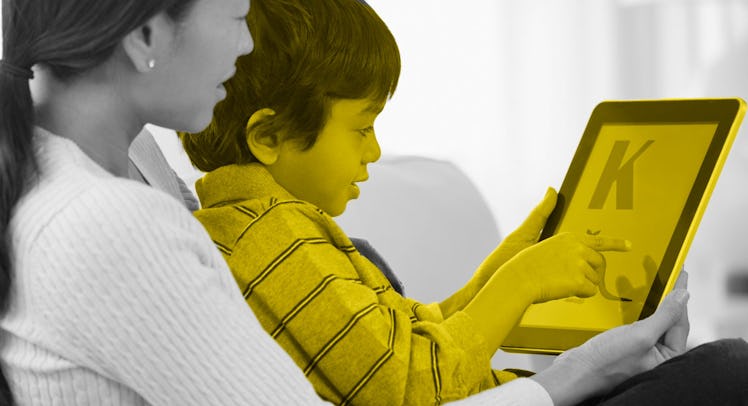How to Teach a Child a Second Language that You Do Not Speak
Parents who want their child to get a jump on a second language can help them learn it, even if the parent can’t speak the language either.

It’s admirable that you want your child to learn a second language. But the fundamentals of Mandarin, Spanish, and Italian are difficult to impart when you do not speak the language yourself. With a lot of patience, however, even mono-lingual parents can give their kids a linguistic leg up for the future. And that learning can start sooner than you think.
“It’s like teaching a kid their first language, in that you start when they’re in the womb,” Kristin Espinar, an applied linguistics expert and owner of Activate Your IELTS, told Fatherly. “There are studies that say even after a month a baby can already distinguish between the sounds and intonations of their own language as compared to another language.” Espinar recommends that, even before a kid is born, parents expose themselves (and their growing babies) to the language of the culture they might like their kid to eventually learn. That might mean making friends who speak the language (or eavesdropping), watching foreign films or listening to foreign music hits.
How to Teach a Child a Second Language
- Start before they’re born by exposing the child to the target language while they are in the womb.
- As soon as they are born, use story time to get them used to the sounds of the target language through simple bilingual children’s books.
- Make a point to learn the language along with your child.
- Find local opportunities to immerse your child in the language.
- Use songs and rhymes to make learning fun and try not to stress the kid out about learning.
Once your child is born, start small. “You can immediately start reading little stories to them,” Espinar says. She recommends simple bilingual children’s books that focus on colors, animals, letters, and numbers. For toddlers, try singing childhood songs and rhymes that are already familiar to a child, in the target language. That might mean singing Twinkle Twinkle Little Star in Spanish, or the Itsy Bitsy Spider in Mandarin. This helps children learn groups of phrases in the target language rather than just words. Plus, the music and repetition will help a child remember.
Not only does this help a child become accustomed to the language—it helps a parent begin to learn too. “That could be a fun goal for parents,” she says. “If you don’t speak Spanish and you want your child to, wouldn’t it be beneficial if you spoke it as well?”
As time goes on, you’ll want to take advantage of local opportunities to engage with the target language—especially if you can’t afford to fly out and practice your French in Paris. Look into cultural festivals, restaurant visits, and even meet-ups and play dates with native speakers. “You’re going to have to make a huge extra effort,” Espinar says. “It becomes a family project.”
Daunting? Perhaps. But sticking to a language studying regimen can help take off the edge, Espinar says. When kids have time each day carved out just for language learning, it helps them (and their parents) remain enthusiastic. “Let’s not stress out the kids with it,” she says. “I see parents put a lot of pressure on kids and it makes them not want to learn and shuts them down.”